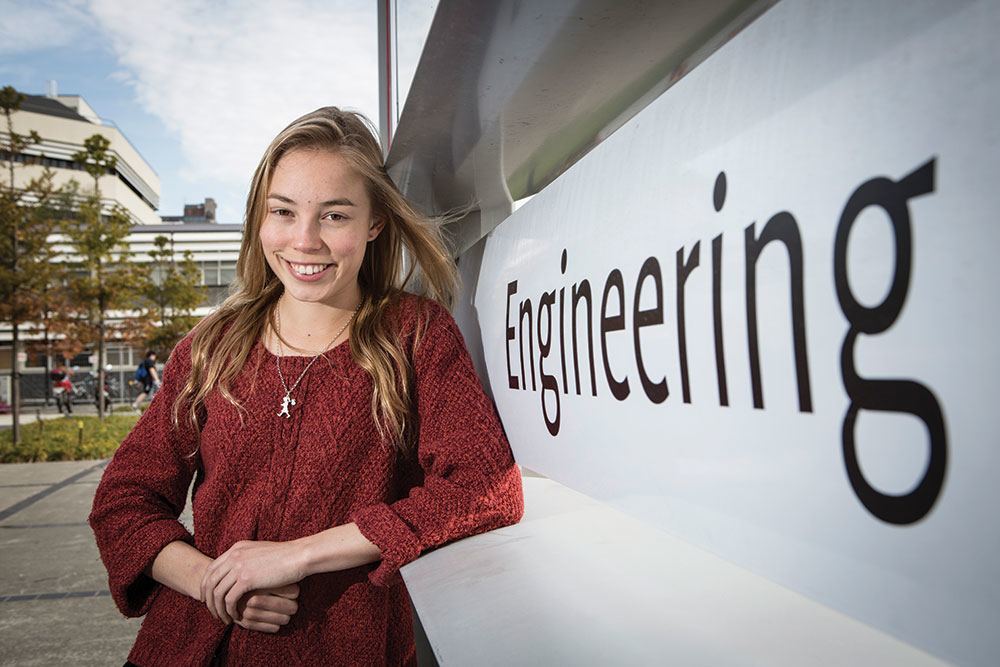Supervisors
Dr Mathieu Sellier, Dr Wolfgang Rack (Gateway Antarctica), Dr Christian Heining (University of Bayreuth, Germany)
Degree
Masters or PhD
Project Description
The melting of ice-sheets and glaciers is stigmatic of global warming and climate change. Because the ice-mass is such a good indicator of climatic changes, it has been under intense scrutiny in the recent past. As counter-intuitive as it sounds, solid ice tends to flow under its own weight like a “very thick” liquid would and the mathematical description of its dynamics bears many similarities with that of highly viscous flows. One of the major challenges geologists face when it comes to understanding ice flows is that while information at the surface of the ice-sheet or glacier is easily accessible, the base is notoriously difficult to access and assess [1]. Current techniques to indirectly infer the bedrock topography rely on radar measurements from an aircraft, a costly operation.
In order to circumvent this difficulty and cost, the aim of the proposed work is to use information from the surface of the ice mass such as the free surface elevation and/or the free surface velocity to infer unknown basal conditions such as the bedrock elevation and/or the basal slip, i.e. the amount by which the ice mass slips on the bedrock. Such problems are often referred to as “inverse problems” since one tries to infer the unknown causes of observed consequences.
The proposed research builds on parallel efforts from the proposed supervisory team to solve similar inverse problems in a different context. For example, Sellier [2] and Sellier & Panda [3] proposed a simple technique to reconstruct the topography of a substrate from the knowledge of the free surface variation in the context of thin liquid films such as coatings. Gessese et al. [4] applied the same idea to river flows, i.e. the authors showed that it is possible to reconstruct the riverbed topography from the knowledge of the free surface elevation or the free surface velocity. Heining & Aksel generalized the results of [5] to include the effects of inertia [4] and showed that the full velocity field could be reconstructed [6].
A preliminary step to solve this inverse problem is to understand and describe in mathematical terms glacier dynamics. To do so, we propose to use the Shallow-Ice-Approximation developed by Hutter in the 80’s [7] which express the evolution of the glacier free surface as a function of the bedrock profile, the ice properties, and the rate of ice accumulation/ablation. However, to model realistic glaciers or ice-sheets, a large computational domain with a sufficient mesh resolution combined with a long simulation span is required. In order to tackle this simulation challenge, we propose to develop and implement a numerical technique known for its optimal convergence rate, the Multigrid technique with adaptive time-stepping and local mesh refinement similar to the one developed by the senior supervisor in the context of creeping flows, [8]. A key advantage of this numerical technique is that it easily lends itself to parallel computation, [9]. We will use here a geometric decomposition of the domain assigning each subdomain to a single parallel processor. Each processor is then responsible for implementing the Multigrid algorithm on its own subdomain. The Message Passing Interface framework which facilitates portability across different (distributed and shared memory) high performance computing platforms will be used.
With the participation of Dr W Rack from Gateway Antarctica, we will have access to the necessary field data to calibrate and validate the implementation of the forward Multigrid solver and solution methodology for the inverse problem.
The student participating in this project will gain valuable experience in scientific computing, numerical techniques, parallel computing/programming, and inverse problem theory. He will be involved in a project with a multi-disciplinary research team. It is hope that the student will be able to visit the University of Bayreuth to interact with a proposed member of the supervisory team, Dr Christian Heining.
Relevant literature
[1] Maxwell D., Truffer M., Avdonin S., Stuefer M., 2008, “An iterative scheme for determining glacier velocities and stresses”, J. Glaciology 54, 888-898.
[2] Sellier M., 2008, “Substrate design or reconstruction from free surface data for thin film flows” Phys. Fluids 20, 062106.
[3] Sellier M. and Panda S., 2010, “Beating capillarity in thin film flows”, Int. J. Numer. Meth. Fluids 63, 431-448.
[4] Gessese A.F., Sellier M., Van Houten E., Smart G. „Reconstruction of river bed topography from free surface data using direct numerical approach in one dimensional shallow water flow“, Inverse Problem 27, 025001
[5] Heining C., Aksel N., 2009. “Bottom reconstruction in thin-film flow over topography: Steady solution and linear stability”, Phys. Fluids 21, 083605.
[6] Heining C., Aksel N. “Velocity field reconstruction in gravity-driven flow over unknown topography”, to appear in Physics of Fluids.
[7] Hutter, K., 1983, “Theoretical glaciology; material science of ice and the mechanics of glaciers and ice-sheets”, Dordrect, etc., D. Reidel Publishing Co./Tokyo, Terra Scientific.
[8] Gaskell, P.H., Jimack, P.K., Sellier, M., Thompson, H.M., 2004, “Efficient and accurate time adaptive multigrid simulations of droplet spreading”, Int. J. Num. Meth. Fluids 45, 1161-1186.
[9] Gaskell, P.H., Jimack, P.K., Koh, Y.-Y., Thompson, H.M., 2008, “Development and application of a parallel multigrid solver for the simulation of spreading droplets”, Int. J. Num. Meth. Fluids 56, 979-989.
Funding
self-funded, through University scholarships, or HPC scholarship.

